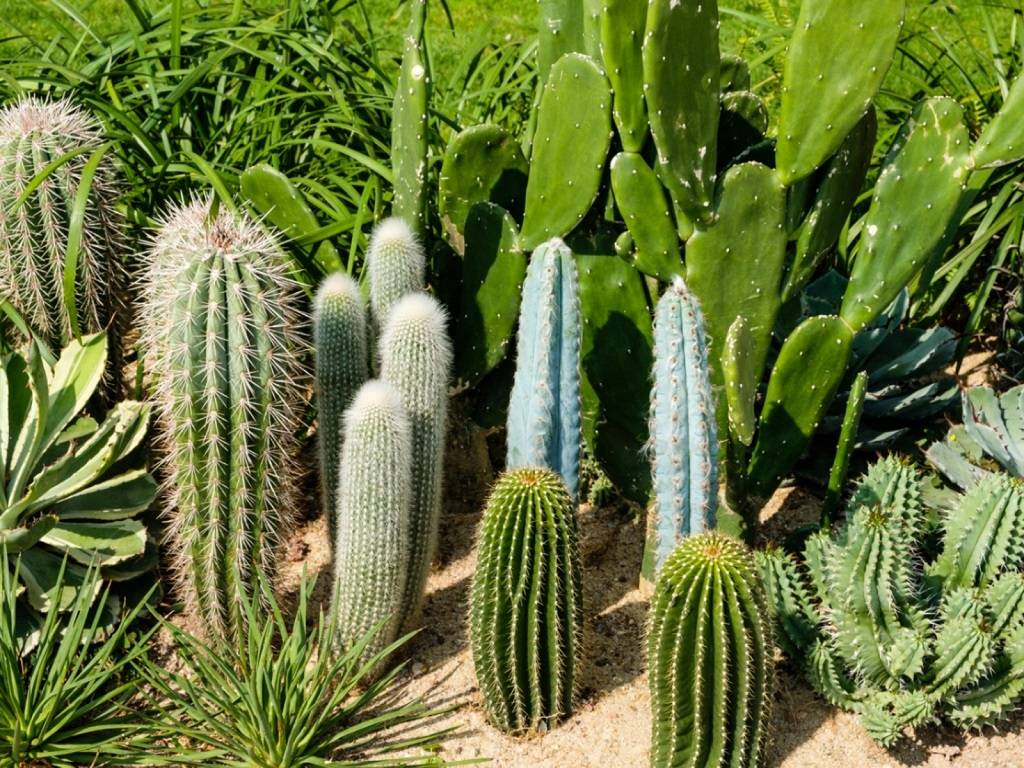
One of the disadvantages of growing houseplants can be keeping the environment moist enough to maintain the health of the plants, which often need jungle-like settings to actually thrive. But this is not an issue for cactus aficionados, as these desert plants appreciate dry air & average room temperatures.
Though little sunlight is essential for cactus health, many species can get by on 3 hours a day & supplementary lighting can help specimens living in the north-facing windows.
A happy cactus can even surprise you with lively blooms, a bonus for plants that already thrill with ghostly shapes & spiny textures. The slow growth & easy-care requirements of these popular varieties add charisma to the mixed container plantings and make sophisticated standalone specimens as well.
Let’s talk about some cactus plants that you can Grow Indoors
Angel Wings Cactus
The Opunta albispina cactus sometimes referred to as the angel wing or bunny ears cactus, is a member of the prickly pear family that produces uniformly spaced clusters of hairs rather than pointed spines. The native Mexican plant produces clusters of pads that are no more than two feet tall but can eventually expand to five feet across. Plants that get a full day of light produce crimson, delicious fruits after pale yellow blossoms.
Rat Tail Cactus
Consider a hanging basket with the amazing Aporocactus flagelliformis or rat tail cactus if your sunniest window lacks the space for a container. The vivid magenta blossoms of this plant, which is native to Mexico, have been utilised in traditional treatments for heart issues. For this quickly expanding cactus, use an adequately sized hanging basket since the thick stems can trail for three feet.
African Milk Tree
Euphorbia trigona is one of those easy cactus varieties that make every gardener feel like an expert. This cactus, sometimes known as the cathedral plant, may reach heights of more than eight feet, but because of its sluggish growth, it is unlikely to reach heights of more than four feet inside. The ridged stems have small, green leaves that are interspersed with thorns; if you cultivate the Rubra variety, the leaves will be reddish-purple. Your African milk tree might thrive for many years if you put it in well-draining soil and give it twice-monthly waterings.
Saguaro Cactus
Anyone who has visited the Sonoran Desert will not rapidly forget the vision of a 40-foot saguaro cactus punctuating the landscape. These magnificent plants may survive for two centuries, and blossoming can take up to 40 years. This cactus's sluggish growth rate makes it feasible to grow one as an indoor houseplant for many years as well. Give your saguaro as much light as you can, and just water it once a month.
Old Lady Cactus
This mammillaria hahniana produces 10-inch-tall spheres in tiny colonies that are covered in white hairs and spines. Healthy plants may have a crown-like halo of pink blossoms around them. This cactus should be planted in sandy potting soil, watered every other week, and watered monthly in the winter.
Christmas Cactus
With its rounded, soft spines and smooth, segmented leaves, the Christmas cactus is one of the cactus family's most toothless members. There is red, pink, orange, and white tubular blooms. This kind of cactus deviates from typical cactus maintenance. The plant is native to the rain forests of Brazil, where it thrives as an epiphyte on the branches of other trees. Provide filtered sunshine and minimal watering for these plants. Your plants will blossom again if you can expose them to a temperature between 50 and 60 degrees Fahrenheit as winter approaches.
Barrel Cactus
Ferocactus, a genus of furious cactus, lives true to its name. Its fleshy, edible pulp is protected by long, hard spines on the outside of the plant. When grown outdoors, the barrel cactus may thrive for many decades and eventually grow as tall as eight to ten feet. As a houseplant, the barrel cactus needs as much sunlight as you can give it, little watering, and loose, sandy potting soil.
















